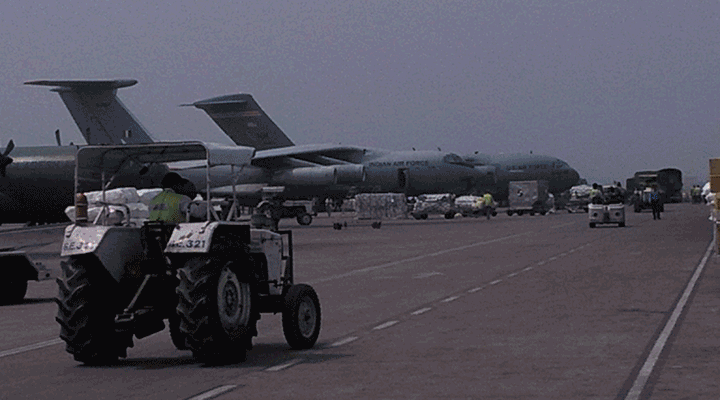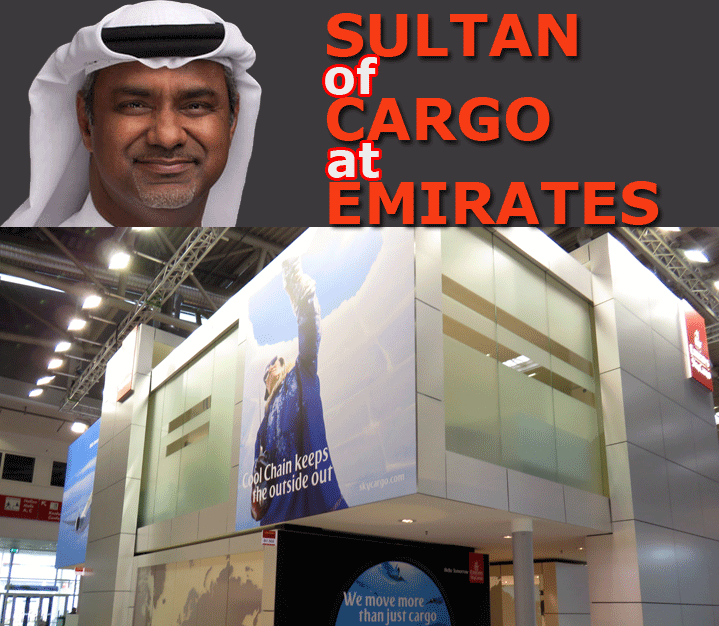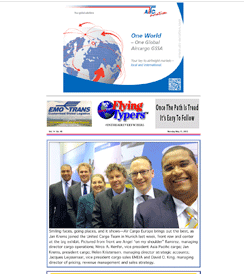 |
 |
 #INTHEAIREVERYWHERE |
 |
| Vol. 14 No. 41 | Wednesday
May 14, 2015 |
 |
(SkyKing
In Nepal)—The
humanitarian relief effort into Nepal
is being hampered by a failing logistics
network, which is in danger of leaving
as many as a million people without adequate
food and shelter ahead of the June monsoon
season.
Nepal has only one international airport
– Tribhuvan Kathmandu International
Airport (KTM) – able to receive
freighters. KTM has just nine parking
stands and one runway. It lacks dollies,
slave pallets and forklift trucks. The
runway was damaged soon after the earthquake
relief effort began. The upshot is a 196
tons landing and take-off limit which
has pushed the emphasis on aid onto smaller
IL76s rather than the larger freighters
required. Charter costs for NGOs have
soared as a result.
There
are a lot of different authorities involved
in what is a complicated process to obtain
the necessary operating authorizations.
Obviously this makes planning very difficult,
particularly when aircraft are also committed
to other customer flights around the world. |
|
Shortly
after Nabil Sultan emerged on the world
stage as Emirates’ “newly
appointed Divisional Senior Vice President,
Cargo July 1, 2013,” he headed to
the United States to meet staff and customers.
We met up with him at SkyCargo John F.
Kennedy International Airport before that
fateful exercise got underway. |
| A Landmark Series By Richard Malkin |
|
 |
|
 |
Take
it from us: the air cargo visionary, the
air cargo pundit extraordinaire, will
always be around. His thoughts leap time
to a yet unrealized future. |
If
You Missed Any Of The Previous 3 Issues
Of FlyingTypers |
| Forward this email to a friend |
| Update Profile To continue receiving FlyingTypers |
Publisher-Geoffrey
Arend • Managing Editor-Flossie Arend
• Associate Publisher/European Bureau
Chief-Ted Braun Film Editor-Ralph Arend • Special Assignments-Sabiha Arend, Emily Arend • Advertising Sales-Judy Miller |
|











 FOUR
DECADES
FOUR
DECADES George
A Shipman (died 2010,
age 73), iconic dreamer and air cargo
doer who served many years at American
Airlines Cargo and later was a management
consultant, training the spotlight
on the cargo agent stated that, “today
[the cargo agent] is perceived differently
than in the past because he is functioning
in a different role than before. By
definition, the agent is the agent
of an air carrier. Traditionally,
this definition drew a line between
agent and consolidator. In the new
environment, however, that line has
proved to be as formidable as the
Maginot Line. Consequently, the carrier
who views the air cargo agent in a
subordinate role and plans his marketing
efforts around that assumption simply
is not being realistic. The agent
no longer is directing his primary
effort toward promoting freight per
se, but is functioning as a negotiator
for the shipper.”
George
A Shipman (died 2010,
age 73), iconic dreamer and air cargo
doer who served many years at American
Airlines Cargo and later was a management
consultant, training the spotlight
on the cargo agent stated that, “today
[the cargo agent] is perceived differently
than in the past because he is functioning
in a different role than before. By
definition, the agent is the agent
of an air carrier. Traditionally,
this definition drew a line between
agent and consolidator. In the new
environment, however, that line has
proved to be as formidable as the
Maginot Line. Consequently, the carrier
who views the air cargo agent in a
subordinate role and plans his marketing
efforts around that assumption simply
is not being realistic. The agent
no longer is directing his primary
effort toward promoting freight per
se, but is functioning as a negotiator
for the shipper.”  Brian
P. Barrow, Director,
IATA Cargo Agency Program, stated
in an editorial: “As the
years wore on and the industry moved
out of the piston-engine era and into
the jet era and then into the widebody
era, the reasons for mutual fault-finding
and sniping grew more complex even
as the industry expanded, gained in
sophistication and started to show
real muscle. Still, while all this
was building, there was indisputable
consciousness on both sides that they
were fated partners; they needed each
other. If not exactly Damon and Pythias,
their interests coincided—at
least up to a point.”
Brian
P. Barrow, Director,
IATA Cargo Agency Program, stated
in an editorial: “As the
years wore on and the industry moved
out of the piston-engine era and into
the jet era and then into the widebody
era, the reasons for mutual fault-finding
and sniping grew more complex even
as the industry expanded, gained in
sophistication and started to show
real muscle. Still, while all this
was building, there was indisputable
consciousness on both sides that they
were fated partners; they needed each
other. If not exactly Damon and Pythias,
their interests coincided—at
least up to a point.” 


